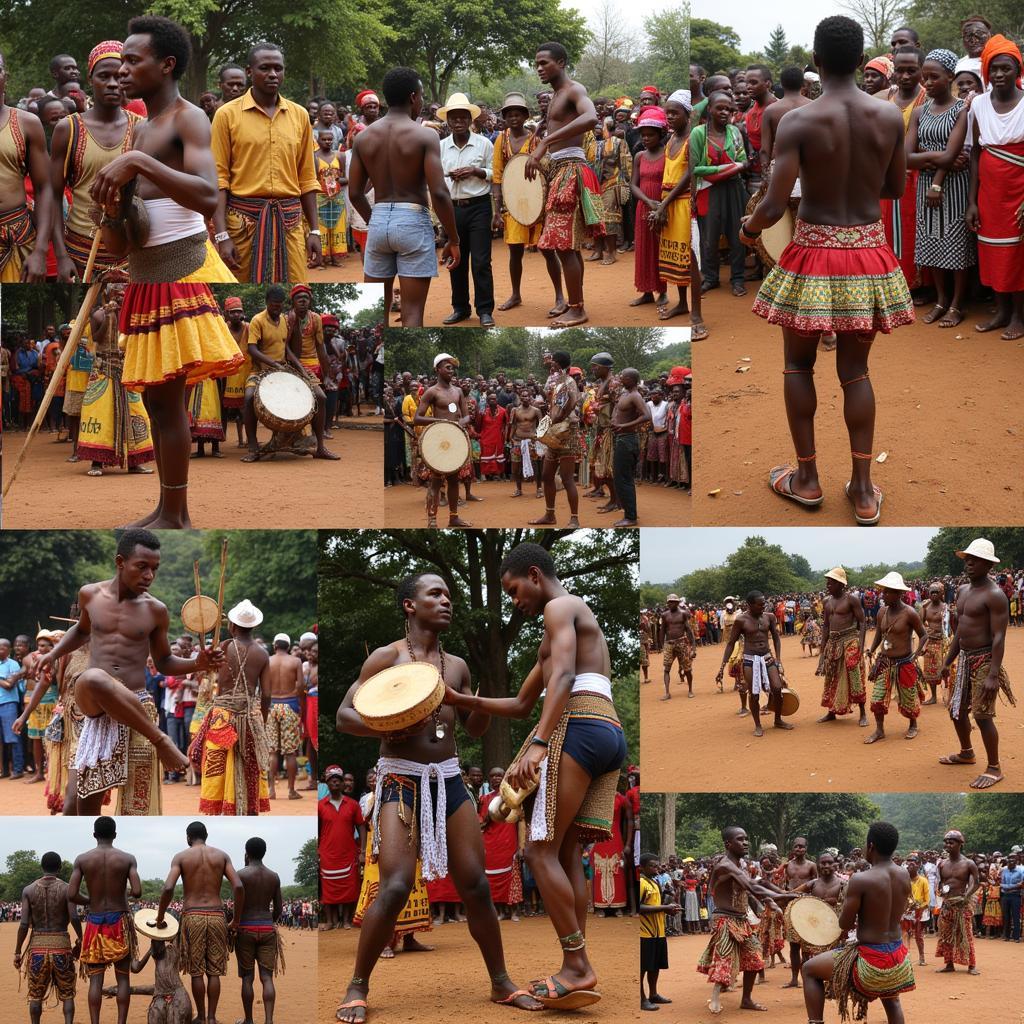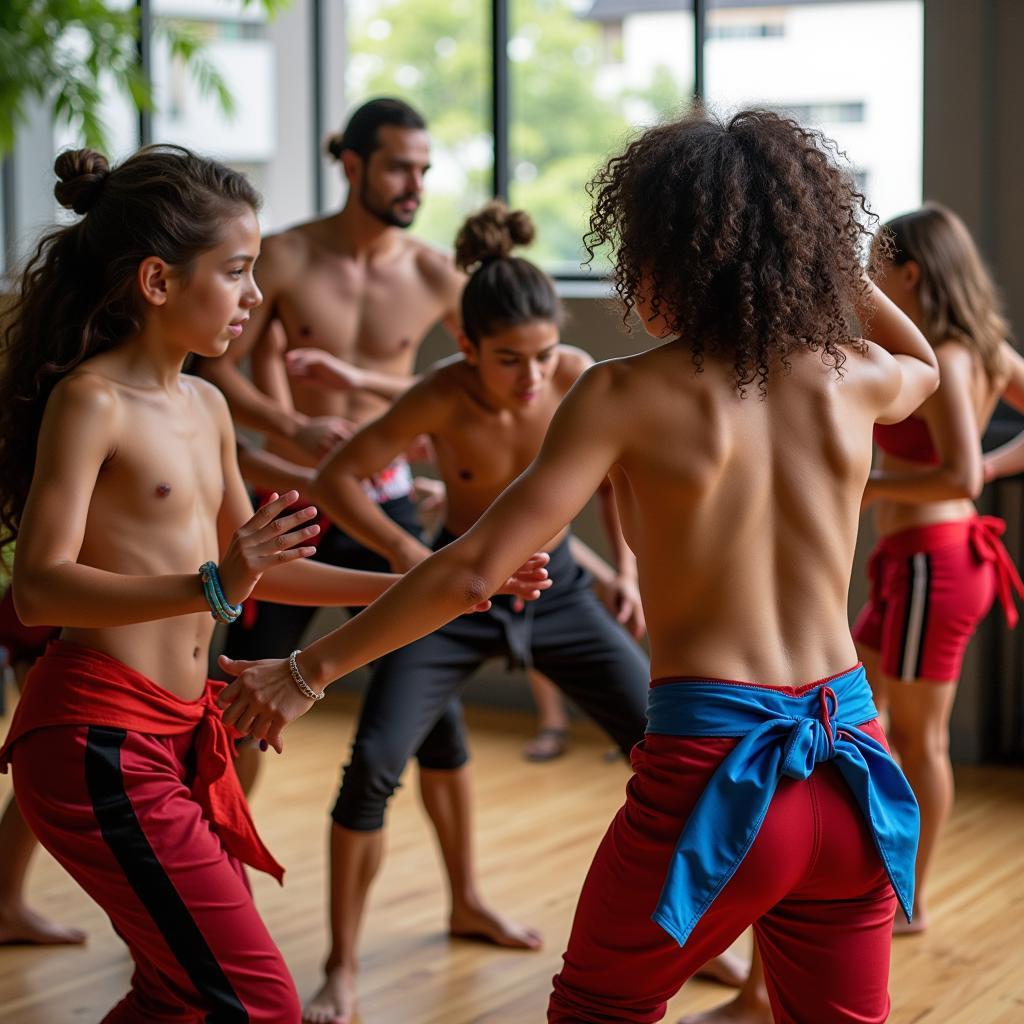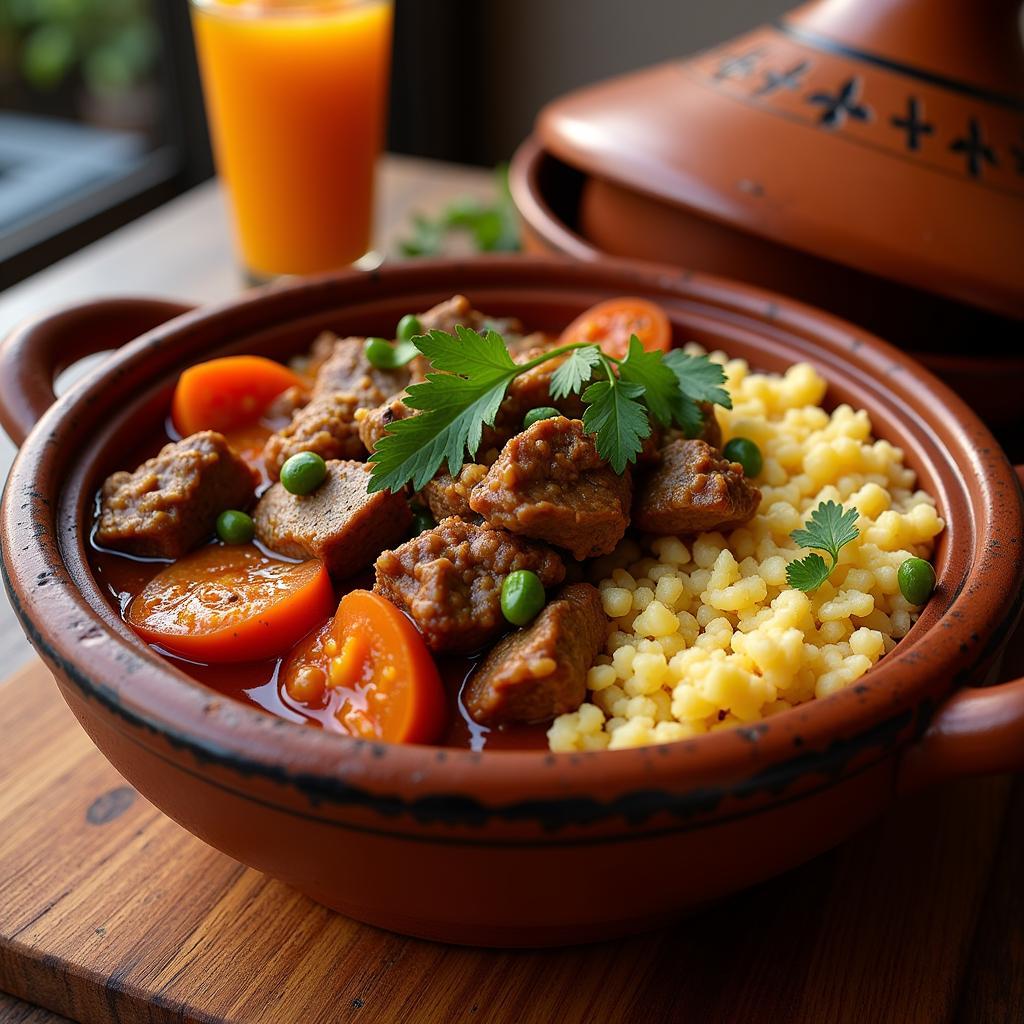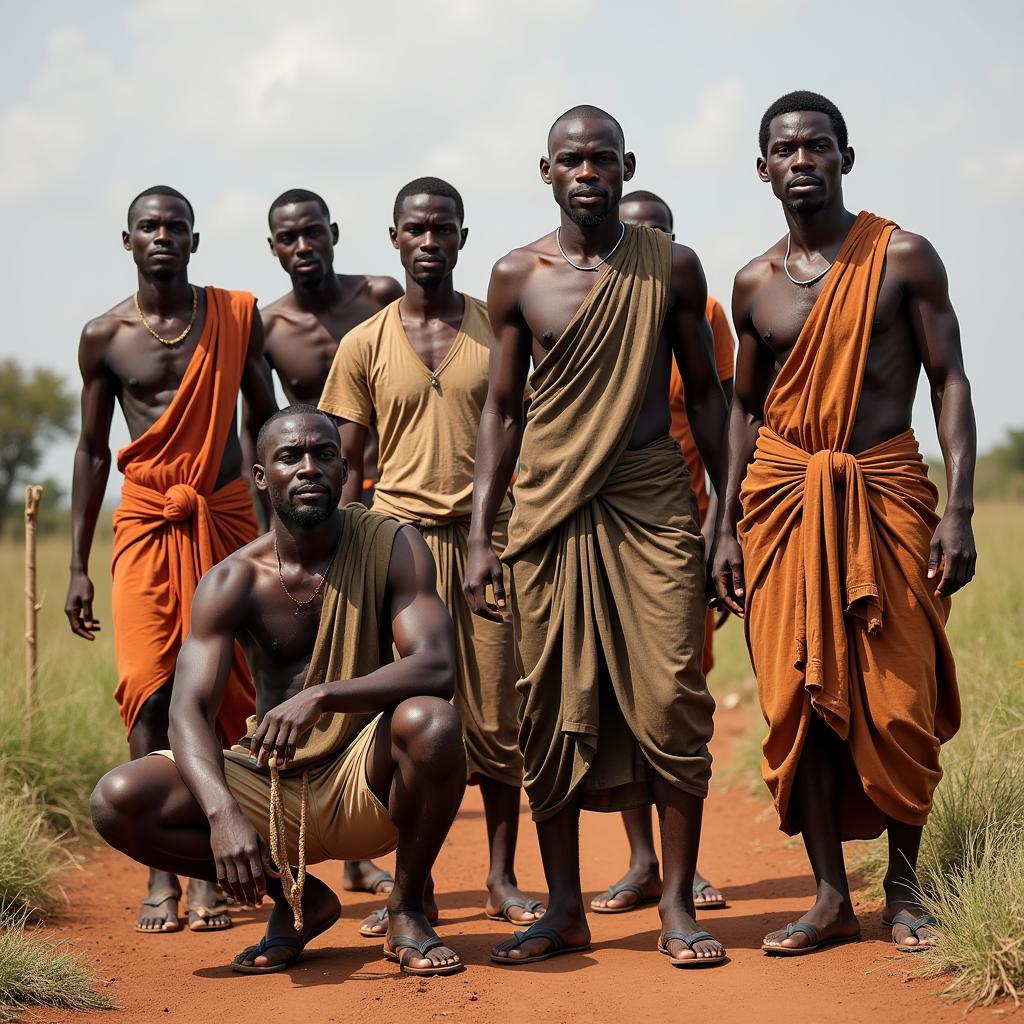Unveiling the Rhythmic Roots: Exploring African Capoeira
The captivating art form of Capoeira, often associated with Brazil, has roots deeply embedded in the African continent. More than just a dance, African Capoeira served as a tool for survival, resistance, and cultural preservation during times of immense hardship. This exploration delves into the fascinating history of African Capoeira, tracing its journey across the Atlantic and analyzing its profound impact on African diasporic communities.
Tracing the Ancestry of Movements: Capoeira’s African Origins
While pinpointing the exact origins of Capoeira remains a complex task due to limited historical documentation, its connection to various African traditions is undeniable. Researchers and practitioners widely acknowledge the influence of combat techniques, rituals, and dances from different regions of Africa, brought to Brazil through the transatlantic slave trade.
Echoes of Angola: The N’golo Connection
Among the strongest links lies with the N’golo or Engolo tradition from Angola. This practice, involving music, singing, and acrobatic movements often used in a competitive context, shares striking resemblances with Capoeira. Enslaved Angolans, particularly those brought to Brazil’s sugar plantations, secretly preserved their cultural practices, adapting N’golo into a veiled form of resistance against their oppressors.
 African Rituals and Capoeira's Development
African Rituals and Capoeira's Development
Beyond Angola: Weaving a Tapestry of Influences
Beyond Angola, traces of Capoeira’s ancestral lineage can be found in other African traditions:
- Hausa Dambe (Nigeria): This wrestling style, known for its agility and kicks, exhibits similarities with Capoeira’s dynamic movements.
- Tahtib (Egypt): This ancient stick-fighting art form emphasizes rhythmic footwork and evasive maneuvers, echoing Capoeira’s fluid and strategic approach.
- Various West African Dance Forms: Rhythmic dances emphasizing improvisation, acrobatics, and musicality, such as those practiced by the Yoruba people, likely contributed to Capoeira’s unique blend of movement and rhythm.
These influences, combined with the resilience and creativity of enslaved Africans, gradually transformed into a distinctive cultural expression within the heart of Brazil.
From Hidden Resistance to Cultural Symbol: The Evolution of Capoeira
Within the confines of slave quarters and hidden from the eyes of colonizers, Capoeira served as a powerful form of cultural resistance. Disguised as a dance, it allowed enslaved Africans to maintain their cultural identity and practice combat skills without arousing suspicion.
The Transition from Survival to Celebration
After the abolition of slavery in Brazil in 1888, Capoeira transitioned from a clandestine practice to a more open, yet still marginalized, part of Brazilian society. Its perception as a dangerous and subversive activity led to periods of persecution and suppression.
Mestre Bimba and the Rise of Modern Capoeira
The 20th century witnessed a turning point with figures like Mestre Bimba, who played a crucial role in legitimizing Capoeira. Bimba developed a structured teaching method, now known as Capoeira Regional, incorporating elements of other martial arts. This innovation gained wider acceptance, transforming Capoeira into a respected martial art and cultural symbol of Brazil.
 Capoeira Circle in Modern Brazil
Capoeira Circle in Modern Brazil
African Capoeira Today: A Global Legacy
Today, Capoeira has transcended its origins to become a global phenomenon, embraced for its cultural richness, physicality, and artistic expression. It serves as a powerful reminder of African resilience, creativity, and the enduring legacy of the African diaspora.
For those seeking a deeper understanding of African culture and its impact on the world, exploring the captivating world of African Capoeira is an enriching journey. To learn more about other aspects of African influence on Latin American history or discover the vibrant world of African Brazilian Chut video, continue exploring Omenka’s diverse collection of articles.



